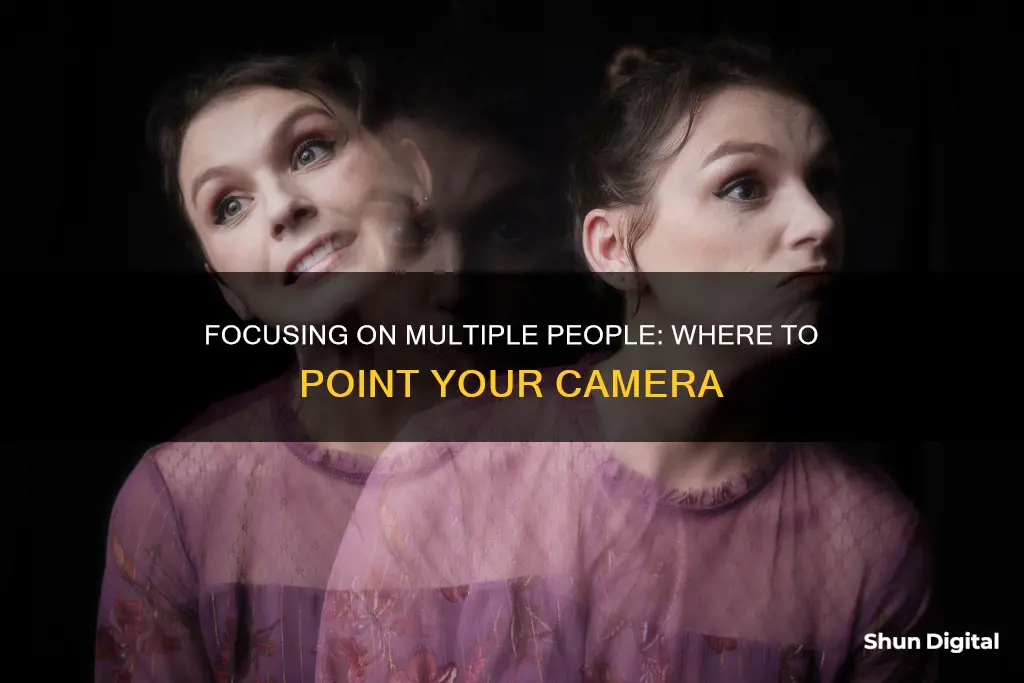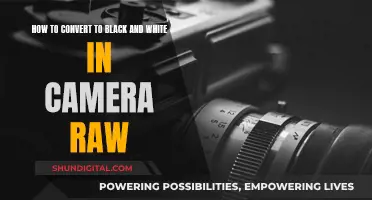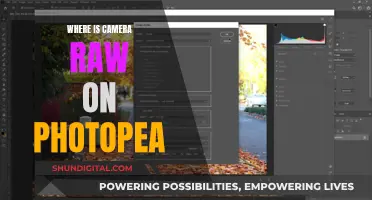
Focusing on multiple people in a photograph can be challenging, especially when they are at different distances from the camera. The key to success lies in understanding and manipulating aperture and depth of field. Aperture, one of the three main exposure settings in photography, controls the amount of light passing through the lens and, consequently, the depth of field, or how much of the image is in focus. A wide aperture results in a shallow depth of field, blurring the foreground and background while keeping the subject in focus. Conversely, a narrow aperture yields a deeper depth of field, bringing everything from the foreground to the background into focus. When photographing multiple people, it is advisable to use a narrow aperture to increase the depth of field, ensuring that everyone in the group is sharp and clear. Additionally, positioning individuals close together and in a single line or layers, with minimal distance between rows, can further aid in achieving a focused group photograph.
| Characteristics | Values |
|---|---|
| Aperture | Use a narrow aperture/large f-stop for a deeper depth of field, which increases the focal plane so everyone in the group is in focus |
| Shutter speed | Use a slower shutter speed to compensate for the camera getting less light when using a narrow aperture |
| ISO | Increase your ISO to compensate for the camera getting less light when using a narrow aperture |
| Distance | The further away the photographer is from the group, the more of the group will be in focus |
| Focal point | Place the focal point on an eye of a person in the middle of the group |
What You'll Learn

Focus on the person in the middle of the group
When taking a group photo, it's important to understand the basics of aperture and depth of field. Aperture refers to the size of the opening in your lens that lets in light, and it's measured in f-stops or f-numbers. A wider aperture, like f/2, gives you a shallow depth of field, meaning only your subject will be in focus while everything else will be blurry. On the other hand, a narrow aperture, like f/11, gives you a deep depth of field, keeping everything from the foreground to the background in focus.
Now, when it comes to focusing on a group of people, the general rule is to focus on the person in the middle of the group. This is because there is a greater distance behind the focal point than in front of it. In other words, you have more space to work with behind the person you focus on than in front of them. By focusing on the person in the middle, you increase the chances of everyone in the group being in the acceptable sharpness range.
It's also important to consider the distance between the group members and the camera. The further away the group is from the camera, the more focused they will be without adjusting the aperture. Additionally, posing the group in a straight line or layers with minimal distance between individuals can help ensure everyone is in focus.
Using a narrow aperture, such as f/5.6 or f/8, is generally recommended for group photos. This gives you a deeper depth of field, ensuring that everyone in the group is sharp and in focus. However, it's important to note that using a narrow aperture reduces the amount of light entering the camera, so you may need to compensate by adjusting the shutter speed or ISO accordingly.
In summary, to ensure everyone in a group photo is in focus, focus on the person in the middle of the group, use a narrow aperture, and consider the distance between the group members and the camera. With these tips, you'll be able to capture sharp and focused group photos every time!
Lightroom's Limit: Understanding the Largest Camera Raw Files
You may want to see also

Focus on the eye of the person closest to the camera
When taking a photo of multiple people, it is important to focus on the right spot to ensure that all subjects are in focus. The best way to do this is to focus on the eye of the person closest to the camera. This is because the focal point of a camera is about a third of the way into the focal plane, with two-thirds behind it and only a third in front. Therefore, focusing on the eye of the person closest to the camera will ensure that the majority of the focal plane is behind that point, increasing the likelihood that all subjects are in focus.
It is also worth noting that the human eye naturally focuses on the nearest eye of a person when viewing a portrait. This means that a photo where the nearest eye is in focus will look more natural and aesthetically pleasing to the viewer.
Additionally, the depth of field, or the distance between the nearest and farthest objects in an image that appears to be in focus, is greater behind the focal point than in front of it. This further emphasises the importance of focusing on the person closest to the camera, as it increases the likelihood that the entire group will be within the depth of field.
To achieve this, it is recommended to use single-point autofocus mode and place the focal point over the eye of the person closest to the camera. This will ensure that the sharpest focus is achieved and that the entire group is in focus.
It is also important to consider the aperture when photographing a group of people. A narrower aperture, or larger f-stop number, will result in a deeper depth of field, increasing the likelihood that everyone in the group will be in focus. However, this also reduces the amount of light entering the camera, so it may be necessary to use a slower shutter speed, increase the ISO, or use a flash to compensate.
By focusing on the eye of the person closest to the camera and adjusting the aperture accordingly, photographers can ensure that everyone in the group is in focus and that the final image is sharp and aesthetically pleasing.
Finding Adobe Camera Raw Files: Location and Access
You may want to see also

Use a narrow aperture to increase depth of field
When taking a photo of multiple people, it's important to ensure that everyone is in focus. One way to achieve this is by using a narrow aperture to increase the depth of field.
The aperture of your camera is the hole that allows light to pass through the lens and reach the sensor. You can adjust the size of this aperture, known as the f-stop or f-number, to control the amount of light that enters the camera. A wide aperture, indicated by a small f-number like f/2, will result in a shallow depth of field, where only the foreground is in focus. On the other hand, a narrow aperture, such as f/11 or higher, will give you a deeper depth of field, bringing both the foreground and background into focus.
For group photos, it's recommended to use a narrow aperture to ensure that everyone in the group is sharp and in focus. An aperture setting between f/5.6 and f/8 is often ideal for this purpose, depending on the lighting conditions. This setting provides a deep enough focal plane for large groups while still allowing for some background blur if the background is not too close to the group.
Using a narrow aperture also means that your camera is receiving less light. To compensate for this, you can use a slower shutter speed or increase the ISO. Alternatively, using a tripod can give you more freedom with your exposure settings, allowing you to use slower shutter speeds without the risk of motion blur.
By understanding the relationship between aperture and depth of field, you can effectively utilise a narrow aperture to increase the depth of field and ensure that everyone in the photo is in focus. This technique is particularly useful when photographing groups of people, ensuring that all individuals are sharp and clear in the final image.
The Power of Charge-Coupled Cameras: Capturing Light, Creating Images
You may want to see also

Use a tripod to allow for slower shutter speeds
When taking a group photo, it's important to understand the basic elements of photography: aperture, shutter speed, and ISO. These three elements make up what is known as the exposure triangle. By balancing these settings, you can achieve the desired effects and ensure that everyone in the group is in focus.
Using a tripod is a great way to stabilise your camera and achieve sharper images, especially when using slower shutter speeds. When you use a narrow aperture to increase the depth of field and ensure everyone in the group is in focus, less light reaches the camera sensor. This means you'll need to compensate by using a slower shutter speed or increasing the ISO. Shooting with a slower shutter speed can introduce motion blur if you're holding the camera in your hands. This is where a tripod comes in handy.
With a sturdy tripod, you can use slower shutter speeds without worrying about camera shake or motion blur. This gives you more freedom to adjust your exposure settings and find the right balance between aperture and shutter speed. It's important not to reduce the shutter speed too much, as a bit of movement from your subjects can add energy to your group portraits.
Additionally, using a tripod allows you to maintain image quality without having to increase the ISO setting. Higher ISO values can introduce noise and affect the overall image quality. By using a tripod and slower shutter speeds, you can keep the ISO low and capture sharper, more detailed images.
In conclusion, using a tripod is a valuable technique when taking group photos. It gives you more control over your exposure settings, helps you achieve sharper images, and allows you to use slower shutter speeds without introducing motion blur. Remember to consider the lighting conditions and adjust your aperture and shutter speed accordingly to get the best results.
Unlocking Camera Raw: Unfiltered Power for Your Photos
You may want to see also

Position the group far from the background to blur it
When taking group photos, it's important to get everyone in focus while also creating a sense of cohesion and capturing the group dynamic. One way to achieve this is by positioning the group far from the background to create a blurred effect. Here are some tips to achieve this effectively:
- Composition is key when taking group photos. Consider the location and choose a place that allows for different levels and rows, such as stairs, benches, or large boulders. This will create a more dynamic and interesting composition.
- To achieve a blurred background, set up the group at a distance from the background. The further the group is from the background, the softer and more blurred it will appear. This technique is especially useful if you want to emphasise the group and create a strong focal point.
- When composing the group photo, consider the empty space and the focal point. Leave some space to lead the eye into the image, ensuring that the photo can be printed in different sizes.
- If possible, use a wide-angle lens to capture everyone in the group, especially if you're using a smartphone camera or a DSLR with interchangeable lenses. This will provide a more expansive perspective and ensure that every smiling face is included.
- Play around with different angles and perspectives. Elevate yourself if needed to fit everyone in the frame. Climbing on a ladder or finding a higher vantage point can give an interesting perspective, especially when paired with a wide-angle lens.
- Pay attention to lighting. Ensure there is sufficient light by using natural light or a flash, depending on the time of day and lighting conditions. Avoid shooting with the sun directly behind the group, as this can cause squinting and harsh shadows.
- Use the right aperture settings to control the depth of field. For group photos, a narrower aperture (higher f-stop value) is recommended to keep everyone in focus. However, this reduces the amount of light hitting the camera sensor, so you may need to use a tripod or adjust other settings accordingly.
- Don't forget to check the edges of the frame to ensure everyone is included in the photo. Take a quick look on the right, left, and bottom sides of the frame to make sure no one is cut off or missing from the shot.
- Communicate and engage with the group. Keep them informed about what you're doing, motivate them to smile, and give them a reason to pose. This will help you maintain control and ensure everyone is on the same page.
Focusing on Stars: Camera Settings for Nighttime Photography
You may want to see also
Frequently asked questions
The best way to focus on multiple people in a photo is to ensure they are all the same distance from the camera and to use a narrow aperture to increase the depth of field.
Use a narrow aperture (large f-stop number) to increase the depth of field, and focus on a point one-third of the way into the group.
Yes, when shooting with your camera in manual mode, you can choose the focus point. It is best to focus on the eye of the main subject, usually the person closest to the camera.
If the two people are close together, it is okay to focus on one person, and the other will likely also be in focus. If they are further apart, you will need to increase the depth of field by using a higher f-stop number.
For large groups, focus on the eyes of someone in the middle of the group, preferably in the middle row if there are multiple rows. This will ensure that there is an equal distance in front and behind the focal point, keeping everyone in focus.







